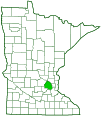thick-headed fly
(Physocephala sagittaria)
Conservation • Description • Habitat • Ecology • Distribution • Taxonomy
Conservation Status |
|
|||||||
| IUCN Red List | not listed |
|||||||
| NatureServe | not listed |
|||||||
| Minnesota | not listed |
|||||||
Description |
||
Physocephala sagittaria is a medium-sized thick-headed fly. It occurs in the United States east of the great Plains and in southern Quebec Canada. It is most common from Maryland to Florida, west to Missouri and eastern Texas. It is uncommon in Minnesota. Adults are 5 ⁄16″ to ⅜″ (8 to 10 mm) in length and brownish-black (dark) with yellow markings and red areas. With their narrow-waisted bodies and dark wings they look like wasps, but they also have a superficial resemblance to some hover flies (family Syrphidae). The head is dark, broad, and a little wider than the thorax. The top of the head (vertex) is usually brownish or red. There are two large compound eyes and no simple eyes (ocelli). The compound eyes are situated at the sides of the head and do not meet in the middle on either sex. The forehead (frons) is yellow with a dark, T-shaped mark. The face is yellow and prominently grooved. The facial grooves are dark. On the upper part of the face, there is a narrow, inverted U-shaped mark curling around the antennae bases. The antennae are mostly dark and have three segments. They are straight and long, longer than the head, and are projected forward and up. The first and third segments are reddish below and are each about half as long as the second segment. The third segment is inflated and has a slender, elongated process (style) at the tip. The cheeks are dark on the sides, pale in the middle. The thorax is dark. The front angles are narrow and raised like shoulder pads. The upper side is dark with no red but with a distinct, yellow, dash-like mark in the shoulder (humeral) area. The knob on each haltere is bright yellow. The exoskeletal plate between the abdomen and the thorax (scutellum) is usually red, sometimes dark. Abdominal segment 2 and part of segment 3 are very constricted (petiolate), wasp-like. Segments 2 through 5 are dark, and they each have a narrow yellow to orange band at the rear margin. Segment 6 has a yellowish dusting at the end. On the female, segment 7 is slender and modified into a pincer-like form. This is thought to be an adaptation that allows the female to pry apart a prey’s abdominal segments and deposit an egg between them. The legs are slender and mostly reddish-brown to yellowish-brown. On each leg, the third segment (femur) is reddish, and the basal half of the fourth segment (tibia) is yellow. The last part of the leg (tarsus), corresponding to the foot, has five segments. The leading (outer) half of each wing is dark, the inner half is clear. The discal cell is usually entirely dark, sometimes lighter brown, sometimes partly clear. There are two color forms of this species. On the ferruginous form, which occurs only in the south, the dark areas of the body are partly to mostly red. On the dark form, which occurs throughout the range of this species, the dark areas are brownish-black. The description above refers to the dark form, the only form that occurs in Minnesota. |
||
Size |
||
Total length: 5 ⁄16″ to ⅜″ (8 to 10 mm) |
||
Similar Species |
||
Habitat |
||
Open shrubby areas near flowers |
||
Ecology |
||
Season |
||
June to August |
||
Behavior |
||
Adults are active during the day and are usually found on flowers. |
||
Life Cycle |
||
The female perches on vegetation, usually on a flower, waiting for a bee or wasp to pass by. When a suitable host is spotted, the female seizes it in flight and deposits an egg on its body. The victim usually offers little or no resistance. When the egg hatches, it burrows into the body of the host. It feeds first on non-essential tissues, but eventually kills the host. |
||
Larva Food |
||
Larvae of bees and wasps |
||
Adult Food |
||
Flower nectar |
||
Distribution |
||||
|
Sources |
|||
| 7/12/2023 | ||||
Occurrence |
||||
|
||||
Taxonomy |
|||
Order |
Diptera (Flies) | ||
Suborder |
Brachycera | ||
Infraorder |
Cyclorrhapha | ||
| Zoosection | Schizophora | ||
| Zoosubsection | Acalyptratae (acalyptrate flies) | ||
Superfamily |
Conopoidea (kelp, marsh, thick-headed flies, and allies) | ||
Family |
Conopidae (thick-headed flies) | ||
Subfamily |
Conopinae | ||
Tribe |
Physocephalini | ||
Genus |
Physocephala | ||
Synonyms |
|||
Conops aethiops Conops castanopterus Conops dimidiatus Conops genualis Conops ruficornis |
|||
Common Names |
|||
This species has no common name. The common name for the family Conopidae is thick-headed flies, and it is applied here for convenience. |
|||
Glossary
Femur
On insects and arachnids, the third, largest, most robust segment of the leg, coming immediately before the tibia. On humans, the thigh bone.
Frons
The upper front part of an insect’s face, roughly corresponding to the forehead.
Halteres
In flies: a pair of knob-like structures on the thorax representing hind wings that are used for balance.
Ocellus
Simple eye; an eye with a single lens. Plural: ocelli.
Scutellum
The exoskeletal plate covering the rearward (posterior) part of the middle segment of the thorax in some insects. In Coleoptera, Hemiptera, and Homoptera, the dorsal, often triangular plate behind the pronotum and between the bases of the front wings. In Diptera, the exoskeletal plate between the abdomen and the thorax.
Tarsus
On insects, the last two to five subdivisions of the leg, attached to the tibia; the foot. On spiders, the last segment of the leg. Plural: tarsi.
Tibia
The fourth segment of an insect leg, after the femur and before the tarsus (foot). The fifth segment of a spider leg or palp. Plural: tibiae.
Vertex
The upper surface of an insect’s head.
Visitor Photos |
|||||
Share your photo of this insect. |
|||||
| This button not working for you? Simply email us at info@MinnesotaSeasons.com. Attach one or more photos and, if you like, a caption. |
|||||
Bob Payton |
|||||
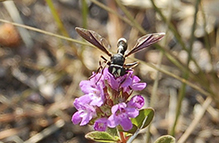 |
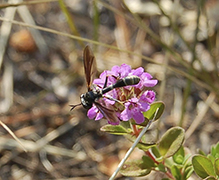 |
||||
 |
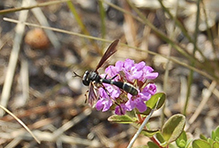 |
||||
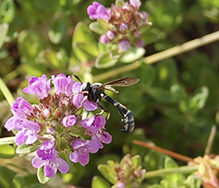 |
|||||
MinnesotaSeasons.com Photos |
|||||
|
|||||

Slideshows |
||

Visitor Videos |
|||
Share your video of this insect. |
|||
| This button not working for you? Simply email us at info@MinnesotaSeasons.com. Attach a video, a YouTube link, or a cloud storage link. |
|||
Other Videos |
|||

Created: 7/12/2023
Last Updated:
